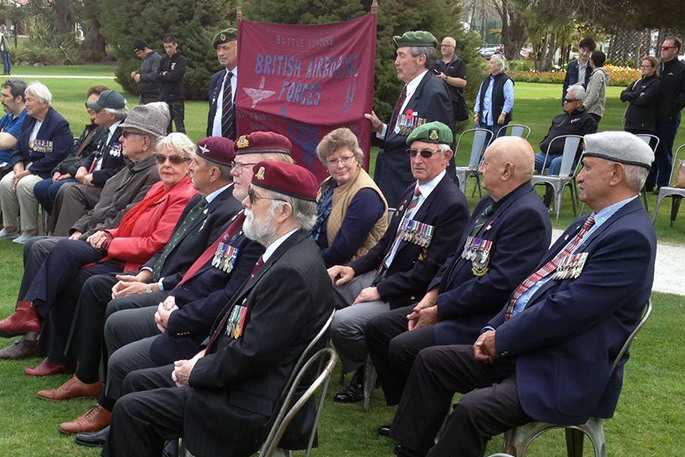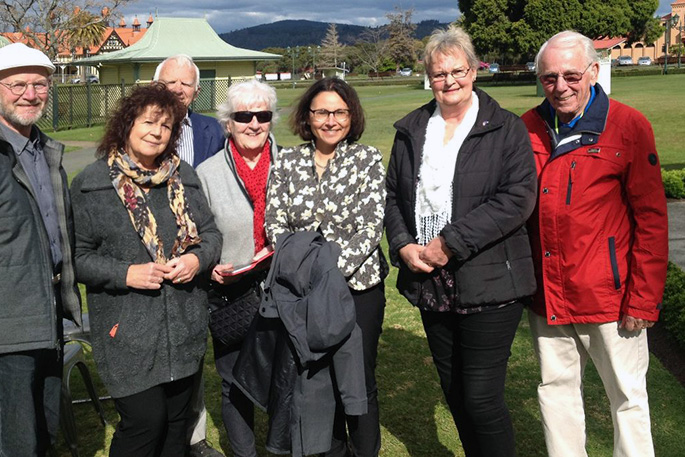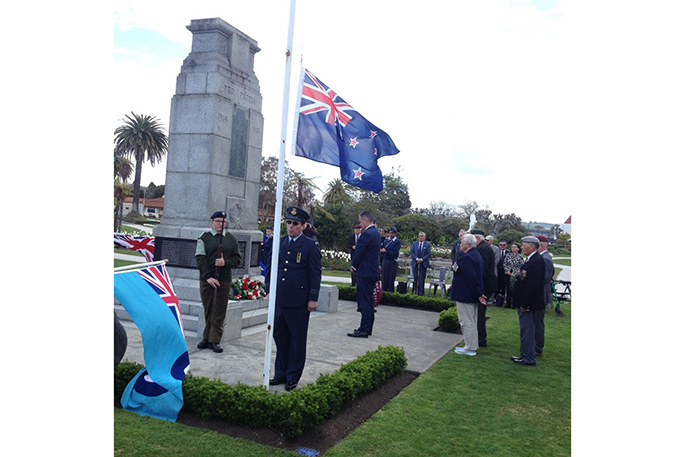The small Rotorua Dutch community sat in silent tribute as the 75th Battle of Arnhem was commemorated in the Government Gardens on Friday.
Unfolding before local dignitaries, elements of the horror of Nazi Germany's retreat were recounted at some length.
So much so, Cornelius Ryan's famous book ‘A Bridge Too Far' could have been retitled ‘The Longest Day'.
Attending the gathering of 60 people was Dutch Ambassador Mira Woldberg, who before the commemorations began, chatted with members of the Dutch community, one of them Henk Buissink, whose story was told recently on Rotorua Now.
Mira noted that this week, 75 years ago, thousands of Allied paratroops landed in Dutch towns and cities to end years of Nazi tyranny.
'It was finally over for the people,” says Mira.
Operation Market Garden as it was known was the first brave attempt to enter Germany's war area.
The people of The Netherlands were finally liberated. Though they neared Arnhem, the Allies did not cross the line – 'it was a bridge too far”.
The battle for Arnhem was fierce and the path it took was called the Highway to Hell.
Thousands lost their lives in the brave Allied assault and Friday was the day to celebrate the freedom of the Dutch people.

Former paratroopers seated during the commemorations.
Mira says while the 75 years of freedom was noted in New Zealand, the war never really ended 'around us”.
She also referred to the March tragedy in Christchurch and the Diary of Anne Frank, 'which has been extremely important to a lot of people around the world”.
Harry Brasser recalled those years as always being in survival mode, 'like anything goes”.
Schooldays were disrupted in the years of German occupation in The Netherlands from 1939 to September 1945 when the Allies began their push to repel the Axis powers.
The allies landed over the southern areas, at Eindhoven, Oosterbeek and Wolfheze. But the landing at Eindhoven on September 18 marked the beginning of the end of the war for the Dutch says Henk Buissink.
Harry Brasser recalled half days at school before hastening to barracks ahead of imminent raids; they did not have food or firewood to keep warm; they could not listen to radios or to London news; the radios were thrown on a 'big heap
They were told to hand in brass ornaments.
'A few did of course, but some light fittings were painted in black so they looked like cast iron.”
RSA president Bryce Morrison read a long history of the Battle of Arnhem, from information sent to him by British Airborne Forces planning chairman, Reynold Macpherson, who welcomed the guests.
Kaumatua Monty Morrison opened the ceremony with a karakia, saying the occasion was not 'so much with great joy but a level of sadness”
The battle was one of the most famous of WW2 history with the British 1st Airborne Division towing gliders laden with paratroops and the 1st Polish Paratroop Brigade undergoing considerable casualties.
On Sunday September 22, they will be assembling at St Faith's Anglican Church for a church service to be officiated by Rev Tom Poata, followed by a parade to honour Te Arawa dead at Muruika Cemetery.
Laying of wreaths at The Cenotaph, in the Government Gardens.




0 comments
Leave a Comment
You must be logged in to make a comment.